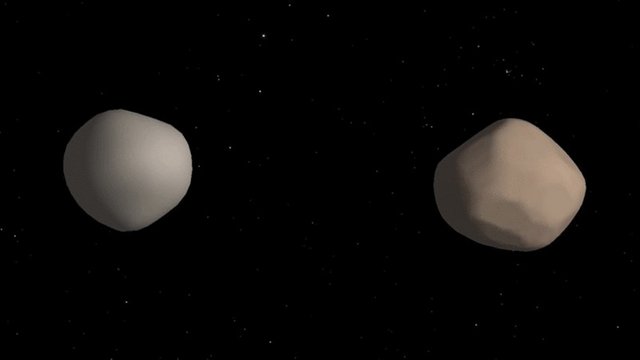NASA Announces Discovery of Rare Double Asteroid

An asteroid that made a close approach to Earth last month is actually two objects orbiting each other, reveal new observations by three of the world's largest radio telescopes.
The new observations obtained between June 21 and 26 indicate that the two objects, each about 900 metres in size, revolve around each other once every 20 to 24 hours, NASA said in a statement on Thursday.
The near-Earth asteroid, 2017 YE5, was first spotted with observations provided by the Morocco Oukaimeden Sky Survey on December 21, 2017, but no details about the asteroid's physical properties were known until the end of June this year.
On June 21, the asteroid 2017 YE5 made its closest approach to Earth for at least the next 170 years, coming to within six million kilometres of Earth, or about 16 times the distance between Earth and the Moon.
On June 21 and 22, observations by NASA's Goldstone Solar System Radar (GSSR) in California showed the first signs that 2017 YE5 could be a binary system.
The observations revealed two distinct lobes, but the asteroid's orientation was such that scientists could not see if the two bodies were separate or joined.
Eventually, the two objects rotated to expose a distinct gap between them.
Scientists at the Arecibo Observatory in Puerto Rico had already planned to observe 2017 YE5, and they were alerted by their colleagues at Goldstone of the asteroid's unique properties.
On June 24, the scientists teamed up with researchers at the Green Bank Observatory (GBO) in West Virginia, US, and used the two observatories together in a bi-static radar configuration (in which Arecibo transmits the radar signal and Green Bank receives the return signal).
Together, they were able to confirm that 2017 YE5 consists of two separated objects. By June 26, both Goldstone and Arecibo had independently confirmed the asteroid's binary nature, NASA said